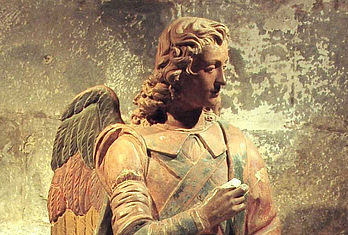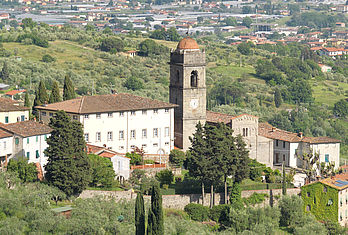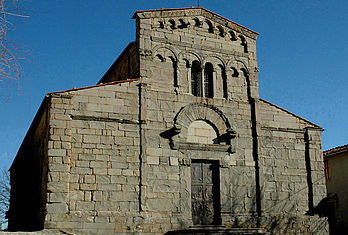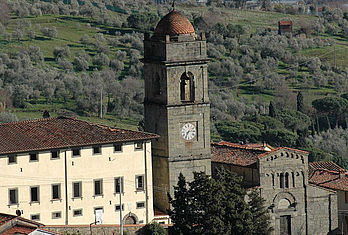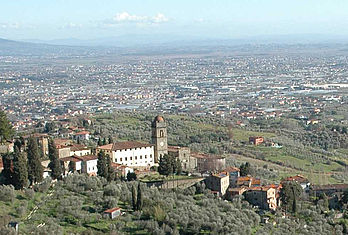Pieve di San Gennaro
Denomination: Plebs S. Iaunarii de Asilattia
First documented: year 980.
History and architecture
The churches of the plain of Lucca were generally rebuilt on the basaments of ancient buildings. San Gennaro was rebuilt in the 12th century and the strategical position, near the borders of Lucca and the Valdinievole, facilitated the foundation of a village around the church during the Middle Ages.
The pieve was probably founded in the period of Saint Frediano (6th century), but the first documentation is onlt from 980. Villagers came from the communities of Castello and Borgo.
The present church reached its present aspect in the 13th century.
The pieve has three aisles, three apses, and a pitched façade. In the only apse remained intact and in the chapiters of the left aisle, we can admire decorations of the first period of its edification. On the other hand, the chapiters of the right aisle dates back to the second edification.
In the 17th century, the central apse and the one on the south side were destroyed and replaced with different constructions. The façade was restored during the time as well: it lost part of the decoration and the slopes in the middle were modified.
The pulpit of Master Filippo (1162), preserved undamaged, is located next to the presbytery, and it is one of the most excellent example of romanic art of the city. It was originally located next to the altar and it was sustained by four columns.
The bell tower stands alone to the north of the church, and it was built in 1849 as attested by its inscription.
Works of art
It is impossible not to mention the painting of the Virgin with Child of Vincenzo Frediani and Raniero di Leonardo (1507) and a Virgin of Saint Tofanelli.
We also have to highlight the presence of a terracotta statue representing an angel. Professor Petretti from the University of Los Angeles has attributed this work to one of the major exponent of the Italian Renaissance: Leonardo da Vinci. According to the illustrious academic, the statue could have been realized by a young Leonardo, probably in 1470, when he was an apprentice of Verrocchio. Documents show that the statue was damaged with a ladder by a sexton and then restored in 1773.
The Parish is OPEN on:
- Saturday from 10 am to 6 pm;
- Sunday from 11 am to 6 pm.
GROUPS please conctat Don Cyprien to plan your visit at:
- mobile: +39 388 75 48 369
- mail: cyprienmwicy@gmail.com
